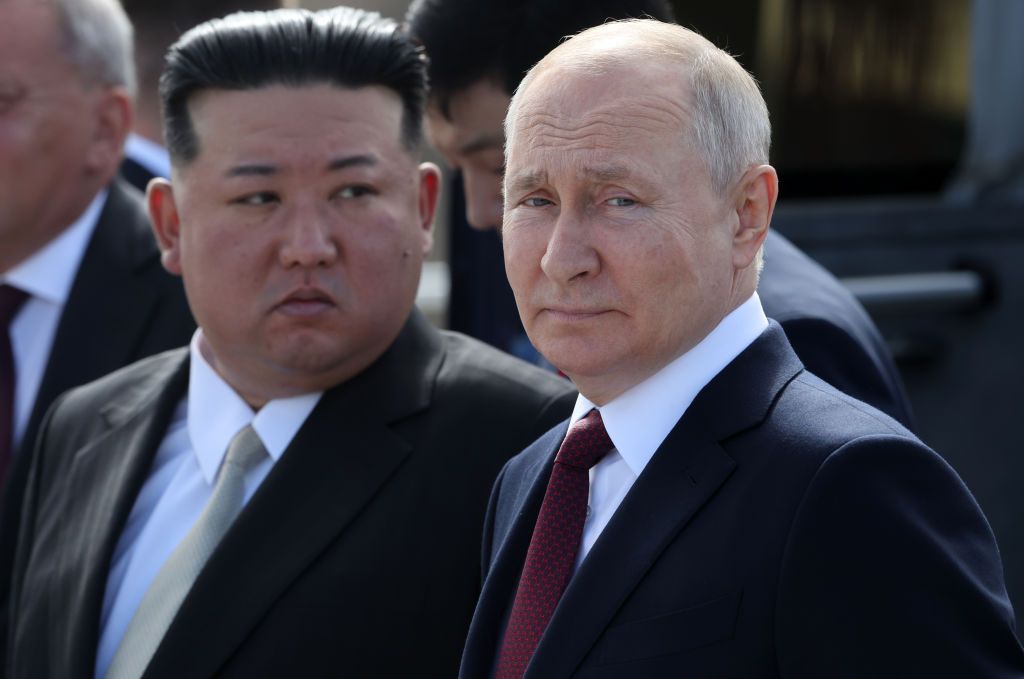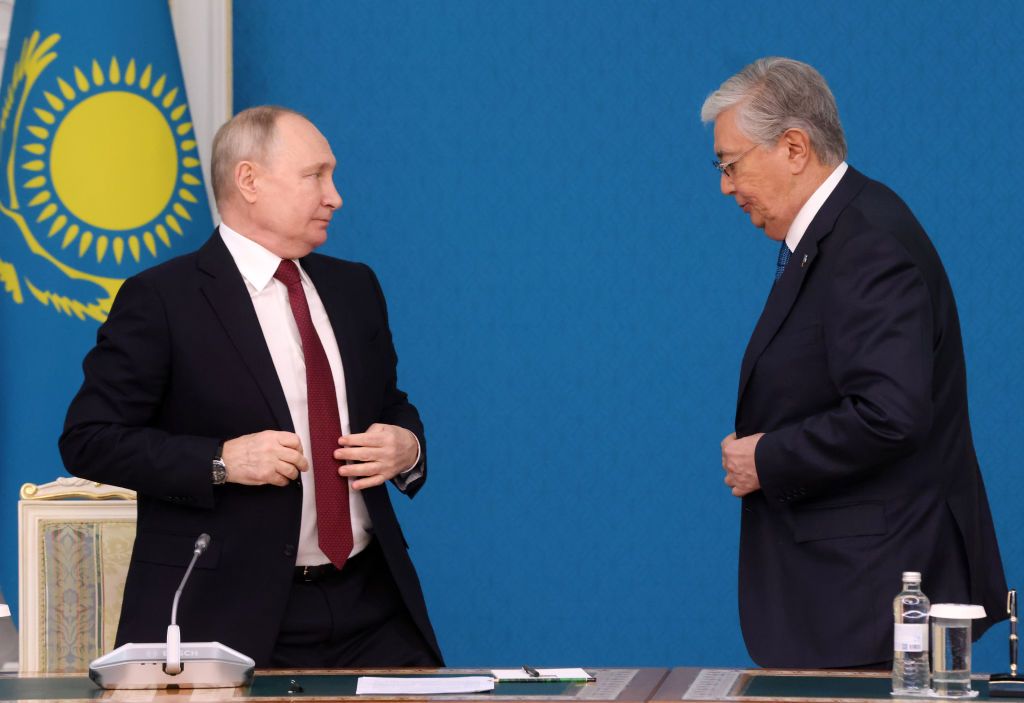Russia's use of North Korean ballistic missiles not a sign of Moscow's depleted domestic capacity

Russia’s missile campaign against Ukraine’s cities and infrastructure is no longer limited by the rate of domestic production as North Korea becomes its top weapons supplier.
Pyongyang has allegedly sent Moscow more than 1 million artillery rounds and the mass strikes on Dec. 30 and Jan. 2 provided the first direct evidence that Russia used North Korean missiles to attack a Ukrainian city, specifically Kharkiv.
Experts say this will allow Russia to intensify its attacks on civilian targets, killing people, doing costly damage, and putting a strain on Ukraine’s air defenses.
“Unfortunately, I suspect we will once again see Russia inflicting terrible damage against Ukrainian civilian cities and infrastructure with missiles,” said Ankit Panda, a nuclear policy fellow at the Carnegie Endowment on International Peace.
President Volodymyr Zelensky condemned North Korea at the World Economic Forum in Davos on Jan. 17, calling its provision of city-striking weapons a step too far.
The two heavily sanctioned autocracies have grown progressively closer since the start of Russia’s 2022 full-scale invasion. North Korea's Foreign Minister Choe Son Hui’s reported visit to Russia last week is one of the latest signs.

Moscow can provide Pyongyang with much-needed food and help it launch reconnaissance satellites, according to John Hardie, deputy director of the Russia Program at the Foundation for Defense of Democracies.
Panda said North Korea struggles with procurement and looks to Russia for composite materials like Kevlar and aramid fibers that are useful in missile airframe manufacturing. It also benefits from Russia’s role as a permanent member of the UN Security Council.
“I think North Koreans are quite happy to be part of those capabilities in exchange for political, economic, and technical benefits from the cooperation with Russia,” he said.
Cooperation means shipping weapons to Moscow. A U.K. intelligence report cited by the Guardian showed that three Russian cargo ships loaded up at a North Korean port and traveled to eastern Russia from September to December.
In October, the White House said that Pyongyang sent 1,000 containers of military equipment to Russia for use in Ukraine, which may have included heavy weapons. South Korean intelligence later said it was closer to 2,000 containers.
Ukraine’s military intelligence chief Kyrylo Budanov on Jan. 21 said that North Korea is Russia’s number one military provider. This would mean it has surpassed Iran, which supplies Russia with Shahed drones and helped it build its own Shahed production line.
In contrast, North Korea likely provided short range ballistic missile variants including the KN-23, an Iskander analogue, and the KN-24, which resembles the American ATACMS, according to Hardie. They can carry warheads of up to 500 kilograms.
“The receipt of ballistic missiles is particularly useful for Russia because Ukraine is short on air defense systems that can reliably intercept ballistic missiles,” he said. “Kyiv is well protected, but other regions much less so.”
It’s possible that Russia also got some midrange range ballistic missiles. According to the White House, the North Korean missiles that hit Ukraine on Dec. 30 and Jan. 2 had a range of about 900 kilometers. This would rule out the Kn-23 and Kn-24 but could include the Hwasong-9 and Hwasong-7.
Military intelligence spokesman Andrii Yusov declined to comment in more detail.
This cooperation is not a sign that Russia struggles with production shortages, Hardie and Panda said. Even so, Russia's production rate of 115-130 strategic missiles per month has not gone up recently, Deputy Defense Intelligence Chief Vadym Skybytskyi told RBC Ukraine.
Moscow has also been negotiating a missile deal with Tehran, according to the White House National Security Council. Russia’s relationship with its two top suppliers, Iran and North Korea, might fuel a competitive dynamic between them, Panda said.
The experts said there is nothing special about North Korean or Iranian weapons, which are just as susceptible to being shot down as anything Russia has used on Ukraine thus far.
“There’s no ‘wunderwaffe’ for either Russia or Ukraine. It’s really a numbers game – how many artillery shells, missiles, etc. can the Russian and Ukrainian militaries get from their own industries and foreign partners,” Hardie said.
“And then the question is if Russia and Ukraine can employ their forces effectively as part of a well-planned operation.”












